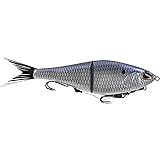Crafting Wilderness Resilience: Advanced Bushcraft and Foraging in Alaska’s Remote Frontiers
Embarking on a solo expedition into the Alaskan wilderness presents a formidable challenge, demanding an unparalleled fusion of bushcraft acumen, foraging prowess, and psychological fortitude. As showcased in the accompanying video, a four-day deep dive into Alaska’s untamed landscapes highlights the critical skills required to thrive when disconnected from conventional infrastructure. Navigating tidal rivers, sourcing potable water, and establishing robust shelters in ocean temperatures often hovering around 40-45 degrees Fahrenheit, while contending with six-foot wave surges and extensive kayak portages, underscores the intensity of such an undertaking. This expert-level approach to Alaskan bushcraft camping necessitates meticulous planning, advanced execution, and a profound respect for the raw power of nature.
1. Strategic Shelter & Campcraft in the Alaskan Wild
Establishing a viable wilderness shelter in Alaska’s dynamic environment is paramount for survival and comfort. The choice of location, often influenced by immediate resources and environmental hazards, dictates the effectiveness of the bivouac. Here, the use of natural elements like dense wood and strategic placement against a backdrop of protective rocks, augmented by a canvas tarp, creates an impressive thermal mass and windbreak. This passive heating strategy is critical when night temperatures drop sharply, chilling the air to the point of visible breath.
The intentional completion of a fire ring, meticulously selecting appropriately shaped stones, reflects a commitment to both safety and efficiency. A well-constructed fire ring not only contains embers but also radiates heat more effectively, maximizing warmth with minimal fuel consumption. Such details, often overlooked by less experienced practitioners, are fundamental to enduring extended periods in remote Alaskan wilderness camping scenarios. Integrating a canvas behind the occupant further amplifies the radiant heat, transforming a basic camp into a surprisingly toasty haven against the encroaching chill.
2. Water Wisdom: Sourcing Hydration in a Dynamic Landscape
Water procurement in coastal Alaska presents unique logistical challenges, demanding keen observation and a deep understanding of hydrological systems. Initial efforts, involving a two-mile round trip along the beach, yielded a mere four liters of water, barely sufficient for a day or two. This scarcity immediately introduces a significant stressor, highlighting the constant, critical need for a reliable freshwater source in such remote settings.
The discovery of brackish water in a tidal river further complicates matters, as its fluctuating salinity renders it unreliable for sustained hydration. Expert bushcrafters understand that tidal rivers shift direction with the tides, bringing in saltwater during high tide. Identifying genuine springs or snowmelt runoff requires patience and topographical knowledge, often necessitating significant treks or a tactical shift in location. Successfully locating a dependable freshwater source provides immense psychological relief, removing a primary survival concern and enabling focus on other critical tasks during an Alaskan wilderness camping expedition.
3. Foraging & Fishing Prowess: Sustenance from Alaska’s Bounty
Securing sustenance through foraging and fishing is a cornerstone of self-reliance in the Alaskan wilderness. While surf fishing might prove challenging due to unpredictable conditions, transitioning to kayak fishing in sheltered bays or near cliffs significantly enhances success rates. The video demonstrates this shift, yielding an impressive array of catches, including juvenile silver salmon, kelp greenling, and various rockfish species like black bass and copper rockfish.
Knowledge of local fishing regulations, such as the daily limits of one copper rockfish and three black bass, is essential for sustainable harvesting. Beyond fish, the coastal environment offers marine edibles like sea urchins, though their nutritional contribution may be minimal. Supplementing fresh catches with pre-packed, calorie-dense foods like cured salami, smoked salmon (perhaps personally caught and processed weeks prior), pilot bread, and even gourmet additions like brie, honey, and walnuts, ensures a robust and varied diet crucial for maintaining energy during demanding physical activity in the Alaskan bush. This holistic approach to foraging extends to understanding regional availability and processing methods for wild edibles.
4. Navigating the Glacial Frontier: Kayaking Through Ice & Tides
Kayaking through glacial lakes and tidal rivers in Alaska demands advanced navigation skills and a profound respect for environmental hazards. The ominous roaring noises emanating from shifting icebergs indicate their massive, dynamic nature, capable of crushing a small craft with ease. Encountering icebergs where ocean water (40-45°F) is substantially warmer than the ice creates unique acoustic phenomena, often described as a deep frying sound, as the ice rapidly calves and melts.
Navigating between these colossal structures, some weighing more than buildings, requires constant vigilance against shifts caused by tides. Strategic portaging across spits of land, as demonstrated, offers a safer alternative to battling powerful, six-foot waves and ripping currents. The journey to a calving glacier, a three-hour paddle against the tide, highlights the immense effort and precise timing required for such ventures. Understanding tidal patterns, crucial for an efficient return journey, becomes a matter of safety, especially when factoring in the sheer physical exertion of five hours of paddling in cold conditions with increasingly cold hands.
5. Reading the Wild: Tracking, Wildlife & Environmental Cues
A seasoned bushcrafter continually reads the landscape for signs, understanding that the Alaskan wilderness is a tapestry of interconnections. Identifying coyote tracks or distinguishing the delicate bones of birds offers insights into local fauna. The discovery of bear paw prints, a critical observation, immediately elevates awareness of potential wildlife encounters and influences campsite selection and food storage protocols. Not knowing the specific bear species (e.g., grizzly or black bear) only underscores the need for heightened caution and preparedness.
Observing a bald eagle soaring above or puffins swimming nearby enriches the experience, connecting the adventurer to the vibrant ecosystem. Beyond wildlife, environmental cues like lifting fog revealing the face of a glacier or the sudden onset of rain provide essential information for decision-making. Packing up gear in the rain, though uncomfortable and leading to soaked equipment, is a reality that experienced outdoorsmen anticipate and manage. This constant interpretation of natural signals, from tracks to weather, is fundamental to informed decision-making and safe travel in remote Alaska.











